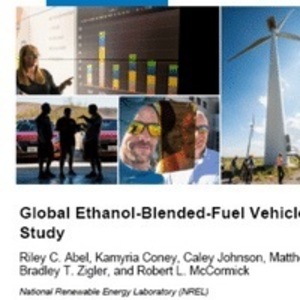USGC: Study demonstrates ethanol blend compatibility of vehicles

November 22, 2021
BY U.S. Grains Council
A new study conducted by the U.S. Department of Energy’s National Renewable Energy Laboratory is out now that shows all vehicles in the study countries are highly likely to be compatible with E10. Motorcycles and scooters similarly analyzed in India and Indonesia have full compatibility with E10, and many are also compatible with E15.
The study looks at the impact of ethanol-blended fuel at various levels on “in-operation” vehicles built to differing emissions and manufacturing standards around the world. Vehicles in Canada, China, India, Indonesia, Japan, South Korea and Mexico were the primary focus. And, because motorcycles and scooters dominate the markets for India and Indonesia, motorcycle fleets for these countries are also assessed.
“As countries around the world create their ethanol policies and implement transportation fuel oxygenate requirements to help reduce air pollution, greenhouse gas emissions and fuel production costs, the global demand for ethanol will expand, as does the need to understand the compatibility and use of ethanol in global markets,” said Stella Qian, USGC manager of global ethanol market development and project lead.
“While nearly 50 countries have Paris Agreement commitments to use biofuels like ethanol to reduce their transport sector emissions, biofuels account for only three percent of the global transportation fuel demand. Understanding how ethanol can be used successfully in all vehicles currently in service is paramount.”
Advertisement
Advertisement
The study assessed the ethanol blend compatibility of vehicles in the target countries by evaluating the emissions standards that have been in place there while correlating those standards with similar ones in the U.S. The Experian Vehicles in Operation database was then used to profile the fleets of vehicles in the countries by model year and emissions standard technology level.
“We did not identify any specific engine or vehicle designs, or engineering practices, that could cause issues when operating on ethanol,” said NREL’s Senior Research Fellow Robert McCormick. McCormick leads the fuels and combustion science group.
“Based on the experiences of the United States and Brazil introducing E10 during the 1970s, it is highly likely that all vehicles globally are compatible with E10.”
Advertisement
Advertisement
Additionally, there is a compelling case that all vehicles at the U.S. Tier 1 (or equivalent) emissions-control technology level or higher are fully compatible with E15. Strong evidence and real-world experience also support that U.S. Tier 2 technology level vehicles have materials of construction and engine control authority for compatibility with E20.
Beginning with a virtual webinar in India in late November, the Council will present the study to policymakers and ethanol stakeholders through its global offices. The study’s rollout will continue throughout 2022, aiming to provide additional evidence and clarification on how ethanol can be used successfully in all vehicles currently in service.
Read the full global ethanol-blended-fuel vehicle compatibility study.
Related Stories
The U.S. Energy Information Administration maintained its forecast for 2025 and 2026 biodiesel, renewable diesel and sustainable aviation fuel (SAF) production in its latest Short-Term Energy Outlook, released July 8.
XCF Global Inc. on July 10 shared its strategic plan to invest close to $1 billion in developing a network of SAF production facilities, expanding its U.S. footprint, and advancing its international growth strategy.
U.S. fuel ethanol capacity fell slightly in April, while biodiesel and renewable diesel capacity held steady, according to data released by the U.S. EIA on June 30. Feedstock consumption was down when compared to the previous month.
XCF Global Inc. on July 8 provided a production update on its flagship New Rise Reno facility, underscoring that the plant has successfully produced SAF, renewable diesel, and renewable naphtha during its initial ramp-up.
The U.S. exported 31,160.5 metric tons of biodiesel and biodiesel blends of B30 and greater in May, according to data released by the USDA Foreign Agricultural Service on July 3. Biodiesel imports were 2,226.2 metric tons for the month.
Upcoming Events










